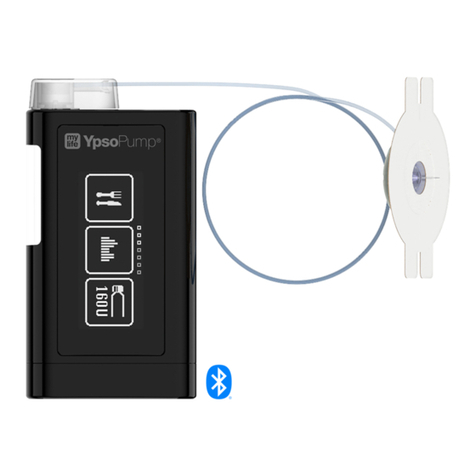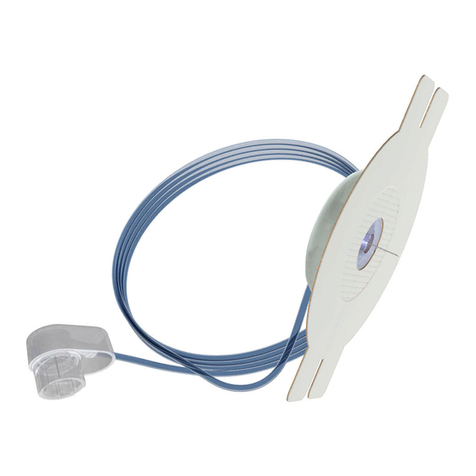9
Inasmuch as it is legally permissible, this warranty and the
legal remedies described are exclusive and they replace all
other oral, written, legal and explicitly or implicitly agreed
guarantees and warranties, legal remedies and conditions,
especially including the warranty of merchantability and
usability for a certain purpose.
This device is only available on prescription. Never use the mylife™YpsoPump®without prior training from
your doctor or diabetes advisor. If you use the mylife™YpsoPump®without professional familiarisation
training, it can lead to incorrect dosage of insulin. As it is common for any user of an insulin pump, ensuring
constant access to an alternative means of injecting insulin (e.g. in case of failure of the insulin pump system)
is your own responsibility. For further advice, please consult your doctor or diabetes advisor.
Procedure in the event of a warranty claim
Any defect in your mylife
™
YpsoPump
®
must be reported to
Ypsomed, or a service point authorised by it, in writing or
on the telephone within the term of warranty.
The claim must contain the date of purchase and the serial
number of your mylife
™
YpsoPump
®
as well as a descrip-
tion of the defect about which the claim is being led. The
mylife
™
YpsoPump
®
may only be returned to Ypsomed or
a service point authorised by it if prior consent has been
given by Ypsomed and if the packaging is appropriate.
If the complaint is justied, Ypsomed will pay any freight
charges for returning the mylife
™
YpsoPump
®
under this
warranty.

































